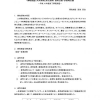HRI
2007
ACM
14 years 3 months ago
2007
ACM
This paper describes a robotic system that uses dance as a form of social interaction to explore the properties and importance of rhythmic movement in general social interaction. ...
HRI
2007
ACM
14 years 3 months ago
2007
ACM
The goal of the RUBI project is to accelerate progress in the development of social robots by addressing the problem at multiple levels, including the development of new scientifi...
HRI
2007
ACM
14 years 3 months ago
2007
ACM
It is often desirable for a human to manage multiple robots. Autonomy is required to keep workload within tolerable ranges, and dynamically adapting the type of autonomy may be us...
HRI
2007
ACM
14 years 3 months ago
2007
ACM
Intelligent planning algorithms such as the Partially Observable Markov Decision Process (POMDP) have succeeded in dialog management applications [10, 11, 12] because of their rob...
HRI
2007
ACM
14 years 3 months ago
2007
ACM
HRI
2007
ACM
14 years 3 months ago
2007
ACM
Operator performance during Space Shuttle and International Space Station robotic arm training can differ dramatically among astronauts. The difficulty making appropriate camera s...
HRI
2007
ACM
14 years 3 months ago
2007
ACM
In many settings, such as home care or mobile environments, demands on users' attention, or users' anticipated level of formal training, or other on-site conditions will...
HRI
2007
ACM
14 years 3 months ago
2007
ACM
HRI
2007
ACM
14 years 3 months ago
2007
ACM
We present an approach to teach incrementally human gestures to a humanoid robot. The learning process consists of first projecting the movement data in a latent space and encodin...
HRI
2007
ACM
14 years 3 months ago
2007
ACM
Robots that interact with humans face-to-face using natural language need to be responsive to the way humans use language in those situations. We propose a psychologicallyinspired...

